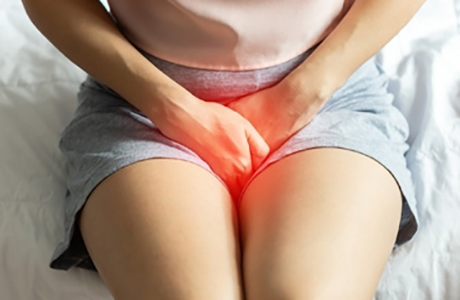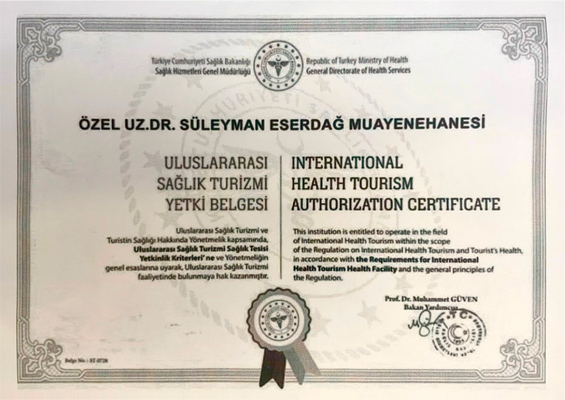Llicen sclerosus is a skin disease that especially involves the genital area in women. In the treatment of genital lichen sclerosus, cortisone-containing creams can be applied and genital CO2 laser, radiofrequency, and SVF treatments can be performed.
Lichen Sclerosus Treatment in Turkey, Istanbul
Lichen sclerosus is a skin disease that especially involves the genital area in women and men. It is in the autoimmune disease group and is six times more common in women than in men. It is a problem of one out of every 59 women. When untreated, it is a chronic and progressive disease. When untreated, it also poses 5% cancer risk. Therefore, early treatment of lichen sclerosus disease and frequent gynecological controls are of great importance.
Lichen sclerosus is also known as “lichen sclerosis disease” in our society. In medical terminology, Lichen sclerosus is known by different names such as ‘Lichen sclerosis’, ‘Lichen disease’, ‘Lichen sclerosus et atrophicus’, ‘Kraurosis vulvae’.
What is Lichen Sclerosus? What Kind of Complaints Does It Cause?
Lichen disease is often seen in the external genital area called the “vulva” in women. This condition is known as “vulvar lichen sclerosus”” (VLS) or "genital lichen sclerosus". However, besides genital area, it can also be seen in all parts of the body such as the neck, hips, inner thighs, shoulders, and wrists.
Vulvar lichen sclerosus changes the skin structure of the genital area. Itching, stinging, pain due to skin thinning, sensitiveness and wounds as well as irritation due to friction while wearing pants are some of the common symptoms. In addition, it causes problems such as painful sexual intercourse, inability to have sexual intercourse, inability to achieve orgasm, lack of sexual drive, and vaginal dryness. In this article, you will be able to access up-to-date information about the treatment of lichen disease that impairs the quality of life and negatively affects sexual life.
Genital lichen sclerosus. The vaginal introitus is very affected by fusion, the labia minora have been faded, the clitoris has been completely buried. The patient has a problem of inability to have sexual intercourse (Patient's consent to publication has been obtained).
How is genital lichen sclerosus disease treated?
Genital lichen sclerosus is a skin disease that impairs the patient's quality of life. It negatively affects daily life with complaints such as regional pain, itching, ache, bleeding and dryness, and can put the patient in a dead end emotionally, psychologically and socially by causing sexual dysfunction. It is not always easy to manage this disease. An adequate treatment algorithm is not available in the literature.
“Hyperkeratosis" is a pathological finding related to thickening of the skin, which is observed in lichen disease. Today, “Patients with lichen sclerosus should be treated based on the degree of hyperkeratosis” is the most widely accepted idea. Treatments with cortisone-containing creams, which form the basis of medical treatment, are planned in accordance with that gradation.
Medical Treatments for Vulvar Lichen Sclerosis
The main purpose of the treatment of Vulvar Lichen Sclerosus (VLS) is to provide a normal or close-to-normal, healthy skin.
Treatment of VLS was believed to be very difficult until the use of potent corticosteroid creams. However, applying adequate doses of corticosteroid creams to the right patient makes it possible to achieve recovery and reduce the risk of cancer.
Medical treatment of vulvar lichen sclerosus is planned with two methods as life-long care therapy and intermittent remission therapy, each of which involves the use of topical steroids (steroid-containing creams). The type and dose of the cream to be applied are determined based on the severity of the hyperkeratosis. The most potent steroid (cortisone) containing cream called Clobetasol propionate 0.05% has been accepted as the gold standard treatment in recent publications. In the treatment of the disease accompanied by moderate hyperkeratosis, b*tamethasone d*propionate 0.05% or m*metasone furoate 0.1% are used effectively.
Treatments with cortisone-containing creams/ointments recommended depending on the severity of the disease
Severe hyperkeratotic disease (very thick, white plaque)
Ultra-high-potency corticosteroids: Clobetasol propionate 0.05% ointment, twice daily until itching has ceased (usually 1–2 weeks),and then a single daily dose for 6 weeks. The treatment is followed by a control visit.
Hyperkeratotic disease (moderately thick white plaque)
High-potency corticosteroid creams: B*tamethasone d*propionate 0.05% or M*metasone furoate 0.1%, twice daily until itching has ceased, and then a single daily dose for 6 weeks. The treatment is followed by a control visit.
Mild disease accompanied by only paleness and mild hyperkeratosis
Medium-potency corticosteroid creams: T*riamcinolone acetonide 0.02% or M*thylprednisolone aceponate 0.1%, a single daily dose for 6 weeks, followed by a control visit.
In the treatments with steroid (cortisone) creams, patients can usually think they are recovering and discontinue the treatment. However, it is important to continue treatment even after recovery. Unfortunately, there is no definitive treatment for lichen disease. All of the treatments administered are intended to stop the disease and reduce the complaints. In addition, regular treatment minimizes the risk of scarring (scar development) and canceration.
Other Creams For the Treatment of Lichen Sclerosus
Topical immunosuppressive treatments (t*crolimus, p*mecrolimus) alternative to topical corticosteroid treatments have become a topic of discussion. Studies have shown that these creams do not make extra contribution to the treatment of the disease. Although their success in treatment is similar to that of steroid (cortisone) containing creams, they have been reported to facilitate the formation of malignancy with their systemic immunosuppressive effects.
The data on treatments with topical tretionine and topical testosterone is not adequate, but patients who have benefited from such treatments have been reported.
Treatment of Lichen Sclerosus During Menopause
Lichen sclerosus disease is more common especially during menopause, when it also cause more severe complaints. If these patients do not have any conditions putting them at risk for breast cancer, local estrogen treatments should also be administered. However, we do not have adequate data to show that it changes the course of lichen sclerosus disease. On the other hand, postmenopausal estrogen therapy has been proven to reduce skin thinning (atrophy) in the genital area, relieve the symptoms of vaginal dryness, and be effective on complaints of genitourinary syndrome.
Do Cortisone-Containing Creams Have Any Side Effects?
The side effects expected after treatments with cortisone-containing creams include skin atrophy (thinning),dermatitis around the mouth and candida (fungal) superinfection. These effects can be observed in all drug treatments which involve steroids. After the exacerbation period of the disease is brought under control, the treatment should be continued with the lowest but adequate dose of cortisone. Studies have revealed that the most common side effect after cortisone treatment is dermatitis around the mouth (peri-orificial dermatitis).
Each patient’s recovery time after treatment with cortisone is different. Maintenance treatment is started after 3-6 months of treatment on average. There are studies showing that the recurrence rate of the disease is 84%, despite topical treatments administered in optimal doses.
Treatments with cortisone creams are intended to;
- Prevent the development of malignancy (canceration),
- Slow the progression of the disease,
- Prevent permanent scar formation.
It is important to continue the treatment once started. It should be remembered that when regular and adequate treatment is not administered, the patient is at risks of cancer (5%),recurrence (80%),and permanent scar formation (50%). On the other hand, side effects related to long-term cortisone use should be kept in mind, as well.
Oral Drug Treatments
The response of the genital area to topical treatments is at a good level. Rarely, systemic therapy is needed for patients resistant to topical treatments. Oral m*thotrexate, retinoic acid, h*ydroxychloroquine treatments can be administered with topical steroids. Unfortunately, such treatments also cannot produce a definitive solution.
Surgical Treatment Procedures for Vulvar Lichen Sclerosis
Vulvar lichen sclerosus may cause loss of function in some patients. Labial fusion (fusion of the labia minora),vaginal introital stenosis and permanent scars do not respond to medical treatment. In these cases, surgical elimination of the fusion in the region is important for the recovery of the functional appearance. Surgical procedures give quite good results and restore the sexual function.
Today, a surgical intervention is recommended to eliminate fusion around the labia minora and clitoris. Topical steroids should also be used until the completion of the post-surgical healing.
In our clinic, patients who have problems such as inability to have sexual intercourse, painful sexual intercourse and inability to achieve orgasm due to advanced fusions can be treated with surgical elimination of the fusions. Thus, a healthy sexual function can be regained.
According to our current knowledge,”vulvectomy”, i.e., the surgical removal of the diseased area in the vulva, should not be attempted because the disease recurs even if such a surgical procedure is performed.
Surgical interventions in pediatric (childhood) vulvar lichen sclerosus are recommended only in cases of severe labial fusion (fusion of the labia minora). This is because severe fusion of the labia minora can lead to problems such as difficult urination and inability to menstruate. However, considering the possibility of postoperative psychological trauma in children, such surgical procedures should be performed only when they are medically needed. On the other hand, biopsy is not recommended for follow-up tests in children.
New Procedures Intended for the Treatment of Lichen Sclerosus Disease
Nowadays, new therapeutic procedures are promising for the treatment of genital lichen disease.
New procedures for the treatment of lichen sclerosus disease:
- Pl*telet r*ch pl*sma (P*RP),
- Ablative fractional laser,
- SVF (Stromal Vascular Fraction) treatment,
- Genital RF (Radiofrequency),Fat grafting
Genital P*RP for the Treatment of Lichen Sclerosus
Pl*telet-r*ch pl*sma (P*RP) procedures are performed in the treatment of resistant hyperkeratotic genital lichen sclerosus. Although the effectiveness of the treatment is not mentioned enough in publications, we observe quite high patient’s satisfaction.
The performance of the genital P*RP procedure is quite simple. Blood taken from the patient's arm is centrifuged. The part rich in thrombocyte in the plasma is separated, activated by ultraviolet light, and injected into the area affected by lichen sclerosus. The procedure can be easily performed under local anesthesia in a clinical setting. The effectiveness of the treatment can be increased by applying laser or SVF in the same session.
Laser Treatment for Lichen Sclerosus
Ablative laser treatment can also be performed in the hyperkeratotic phase, especially for patient with severe fusion and dyspareunia problems. Usually fractionated carbon dioxide lasers are used for this process. The thermal effect of the laser first starts an inflammation (inflammatory process) and then a renewal process in the tissue.
Laser treatment for lichen is recommended to be performed in 3-4 sessions every few months. Results obtained with the treatment are highly satisfactory. Some patients gain well-being even after a single session.
Topical (local) treatments, P*RP and SVF treatments can also be performed in conjunction with laser treatments. In our clinic, lichen sclerosus treatment can be treated with fractional lasers called femilift and monalisa touch.
Lichen Treatments with Genital Radiofrequency
Like laser treatments, genital radiofrequency treatments are intended to regenerate the tissue affected by lichen sclerosus disease, increase local blood circulation, and stimulate collagen production. Its difference from laser is that it has no ablative effect and allows for easier patient tolerance. With this advantage, it can also be performed in childhood.
Photodynamic Therapy
Phototherapy that involves photodynamic therapy has been reported to be effective in the treatment of genital lichen disease. However, phototherapy is difficult to apply in the genital area, and is not practical in all cases. There are studies showing the efficacy of narrow band UVB therapy in the treatment of extra-genital lichen sclerosus.
SVF and Fat Injection Therapies
SVF (Stromal Vascular Fraction) is the s*tem c*ll-rich part of the processed fat harvested mostly from the abdomen or thigh. This part is aspirated into the injector and then is injected into the areas affected by the disease. Sometimes the fat tissue can be directly injected for this purpose. Some studies have showed that a cocktail in the form of SVF+P*RP mixture is effective in the treatment of lichen sclerosus.
Lichen Sclerosus Treatments We Perform at Hera Clinic
The procedures we perform to treat lichen sclerosus in Istanbul and Ankara Hera Clinic, which are selected depending on the patient’s complaints and the degree of the disease:
- Topical drug treatments,
- Genital P*RP,
- Carbon dioxide fractionated laser,
- Fat injections (lipoinjection),
- SVF (Stromal Vascular Fraction) treatments,
- Surgical procedures (surgical elimination of fusions in the labia minora, clitoral area, and at the vaginal introitus).
We also support our patients by recommending special autoimmunity diets. Treatments can be performed on genital area and other areas in both women and men.
Does Vulvar Lichen sclerosus Become Cancerous?
It is definitely known that all types of lichen sclerosus diseases are associated with squamous cell cancer. It used to be said that lichen sclerosus was the cause of a significant portion (60%) of vulvar squamous cell cancers in periods when treatments were insufficient. However, this risk has been minimized as a result of the development of new treatment methods and the increase in the awareness level of patients.
Vulvar squamous cell cancer appears in the form of permanent cracks, non-healing ulcers, nodule formations, hyperkeratotic plaques and fungal tumors. When patients with lichen sclerosus are given information about these appearances and are called for frequent follow-up tests, the risk of cancer after treatment will be minimized.
Quality of Life
Genital lichen sclerosus disease has a significant effect on quality of life. It should not be considered as just a skin disease. Patients should also be given psychological support. Serious anxiety disorders develop due to cancer, scarring, marriage, pregnancy and birth in the process of disease, especially if the disease has existed since childhood.
It should be known that the disease has a chronic process that requires patience, there is no definitive treatment and complete recovery, medical and physical treatments should be performed uninterruptedly or intermittently to reduce the complaints and prevent the progression of the disease.
In menopausal patients, menopausal problems should be addressed as well. Changes in skin structure, which is already sensitive and fragile due to hormonal withdrawal, should be closely monitored.
It is obvious that women live their greatest problems in their sexual life. Sexual support treatments are a necessity for women of all age groups. Special approaches should be provided for patients who have problems in a spectrum ranging from painful sexual intercourse to inability to have sexual intercourse. Physiotherapy, behavioral therapy models and medical treatments can be performed to relieve the spasm in the pelvic floor muscles of women, who have been suffering from painful relationship for a long time.
The cause of genital lichen disease is not exactly known yet, but there have been great developments in its treatment in recent years. The current treatment protocols allow for keeping the disease in the recovery period for a long time.
How Does Vulvar Lichen Sclerosus Proceed?
The course of Lichen sclerosus disease is unpredictable. It varies from person to person. However, it should be known that if the disease is not treated, half of the patients lose their vulva structure completely, while the rest of them encounter partial changes over time. When left untreated, lichen sclerusus disease leads to irreversible problems including;
- Burial of the clitoris,
- Fading of the labia minora,
- Cracks and bleeding areas in the labia majora,
- Vaginal introital stenosis,
- Scar and fissure formation in the perineum (between anus and vagina).
When left untreated, it is likely to become cancerous in 2 to 6% of patients. Since the risk of transformation into cancer is unpredictable, treatment processes of all patients should be managed in the same way.
Lichen Disease During Pregnancy
There is limited information about the course of genital lichen sclerosus disease during pregnancy. However, in the light of recent data, it is reported that pregnancy does not change the course of the disease. In addition, medical treatments are reported to be safe and necessary during pregnancy. It would be useful to consult the clinic to get information about this issue. Pregnant women with lichen sclerosus disease in their genital area can usually have vaginal delivery.
Follow Up Of Genital Lichen Sclerosus
Correct diagnosis is the first step in the treatment of genital lichen sclerosus. After the verification of the diagnosis with clinical findings and biopsy, an appropriate treatment protocol should be started. The treatment is intended to protect the skin tissue as much as possible and to reduce the complaints. However, long-term follow-up is important for the measurement of the efficacy and safety of the treatment.
Precautions to Take in Cases of Lichen Sclerosus
The probability of canceration (malignancy) ranges between 2 and 6% in cases where the disease is left untreated for life and where it is followed up insufficiently. Canceration can manifest itself in the form of vulvar intraepithelial neoplasia, malignant squamous cell neoplasia of the vulva, and invasive squamous cell carcinoma. Therefore, it is of great importance to start treatment from the moment of diagnosis, carry out regular follow-ups and perform biopsy tests at intervals. With early diagnosis and adequate treatment reduce the risk of canceration and the possibility of permanent scarring.






